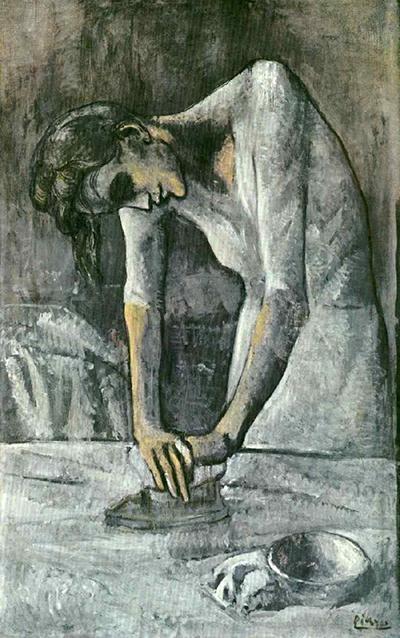
Woman Ironing, Pablo Picasso (1904).
Earlier this summer, Leila A. Amineddoleh was quoted in an article in ARTnews about a recently dismissed case in the Southern District of New York. The dispute involved claims that the painting in question, a Picasso work (Woman Ironing) valued at $150 million, was sold under duress during the Nazi Era.
Unfortunately, courts have not had clear guidance on what constitutes a “duress sale” because judges have been punting that question for years. Thus, Nazi-era cases are often decided on technical grounds, like jurisdictional determinations or time limitations. As Leila predicted last January, Bennigson v. The Solomon R. Guggenheim Found., 1013 N.Y. Slip Op. 24164, one of the most recent Nazi-looted art litigations, was dismissed on technical grounds, namely laches. In Bennigson, the Southern District of New York found that the heirs of Karl Adler (a German Jewish man) had waited too long to file a claim because the family had known about the location of the Picasso painting for decades.
The court granted the Guggenheim Motion to Dismiss, primarily based upon the affirmative defense of laches. Judge Andrew Borrok found that laches is still a relevant defense, even after the passage of the Holocaust Expropriated Art Recovery Act (the HEAR Act). The Act was passed to prevent Nazi-looted art restitution claims from being barred on statute of limitations grounds. The court stated, “not only does laches continue to be an appropriate defense [even after the passage of the HEAR Act]…, it may also be resolved as a matter of law at the motion to dismiss stage where the original owner’s lack of diligence and prejudice to the party currently in possession are apparent.” The court cited a number of recent cases, stating, “The HEAR Act explicitly precludes application of “defense[s] at law relating to the passage of time” but does not interfere with the application of defenses at equity, such as laches (Pub L. No. 114-308, 130 Stat. 1524, § 5[a]; Zuckerman v Metro. Museum of Art, 928 F3d 186, 196 [2d Cir 2019]; Reif v Art Inst. of Chicago, 2023 WL 8167182, at *1 [SDNY Nov. 24, 2023], reconsideration denied sub nom. Timothy Reif, et al., Plaintiffs, v The Art Institute of Chicago, Defendant, 2024 WL 838431 [SDNY Feb. 28, 2024]). The court found that the heirs had demonstrated “over 40 years distinct lack of diligence in not raising any concerns.”
However, while the court dismissed the matter based on laches, the opinion ultimately does address duress as a secondary basis for dismissal and it provides guidance for future disputes. Here, Judge Borrok found that the Plaintiff’s Amended Complaint failed to allege any actionable duress under NY law. Amongst other considerations, the opinion pointed to a letter from the Guggenheim to Eric Adler (the eldest son of the seller, Karl Adler). The museum’s letter explained that it was researching the provenance of the painting as it was preparing a catalogue for a collection within the institution. In response, Eric Adler confirmed that the painting was purchased by his parents in 1916 and sold in 1939, but he did not allude to a duress sale or anything else concerning the disposition of the painting. There was no reference in his letter to demanding the restitution of the painting. This, among other reasons, led the court to find that the sale was not made under duress.
Still, the court acknowledges the horrors of WWII and extensively quotes language from the Amended Complaint that recounts the tragedies that occurred during that period. One particularly heartbreaking paragraph was:
“On September 15, 1935, with the enactment of the Nuremberg Laws (“The Laws for the Protection of German Blood and German Honor”), the Nazis consolidated and extended the existing exclusionary measures against Jews. The Nuremberg Laws deprived all German Jews, including Karl and Rosa, of the rights and privileges of German citizenship, ended any normal life or existence for them and relegated them to a marginalized existence, a pivotal step toward their mass extermination.”
While dismissal of Bennigson was primarily based on laches, the court also took the opportunity to examine the duress claims and it provide guidance for future litigations involving Nazi-era takings and war-era transactions.